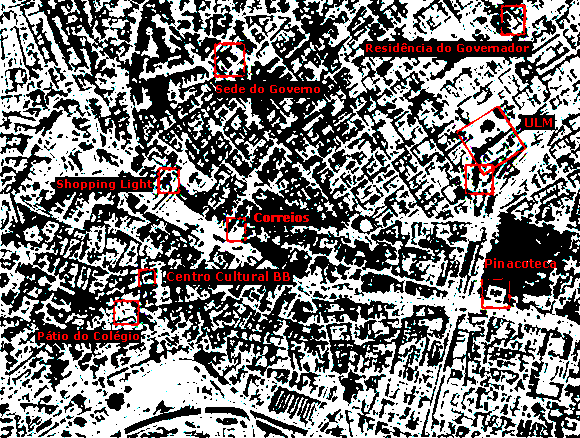Urbanism and Art
in Global Metropolis
The urban intervention mechanics and meaning have
significantly changed in the different phases of the capitalist metropolises restructuring
process. In São Paulo, the period initiated in the 40’s was marked
by important governmental actions, guided by a central planning of metropolitan
scale. They consisted mainly of large road infrastructure (express and subway)
construction, implanted over a traditional urban fabric in fast expansion, which
was blocking the access and the efficiency of the industrial park.
But the installation of these vast transit systems, sometimes over streets and squares, tended to disrupt the existing urban pattern. The public spaces of the traditional city, basis of identity, past and social life, has been sacrificed by this shift. The principle of movement imposed itself to the place.

x
The urban intervention mechanics and meaning have significantly changed in the
different phases of the capitalist metropolises restructuring process. In São
Paulo, the period initiated in the 40’s was marked by important governmental
actions, guided by a central planning of metropolitan scale. They consisted mainly
of large road infrastructure (express and subway) construction, implanted over
a traditional urban fabric in fast expansion, which was blocking the access and
the efficiency of the industrial park.
But the installation of these vast transit systems, sometimes over streets and squares, tended to disrupt the existing urban pattern. The public spaces of the traditional city, basis of identity, past and social life, has been sacrificed by this shift. The principle of movement imposed itself to the place.
"The crisis of the city", resultant of the planning strategies, would completely modify the urban interventions program. In reaction to the extensive and homogeneous character of previous practices, it restored the principle of local interventions, at small scale. It is an attempt to reconstruct _ mainly in central areas _ the traditional urban design, the places of social exchanges, the public spaces, disrupted by the interventionist urban policies. To restore the urban context, the places of past and memory, capable to support the perception and visualization of urban space.
Essential, in this strategy of punctual interventions, is the role of the cultural centers. The conversion of historical or industrial constructions in culture centers was, in this period, a recurrent procedure of patrimonial practices. But it has a basic differential, in relation to the previous phase: architecture and art now are not anymore understood as experimentation, creation of new forms and new parameters for experience and perception, to be inserted in the general notion of culture, at the service of social integration and leisure.
references
K. Lynch, The Image of the City, Cambridge, MITPress, 1960.
A. Rossi, La arquitectura de la ciudad, Barcelona, ed. Gustavo Gilli, 1975.

